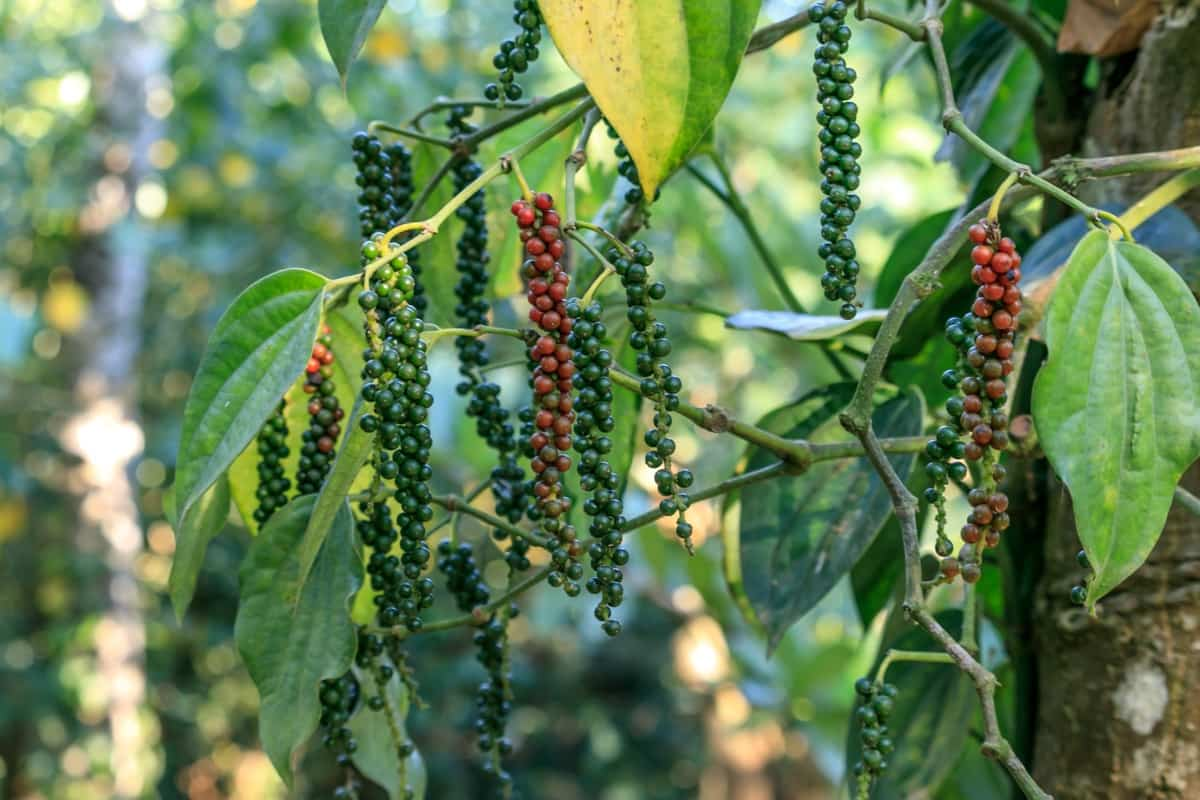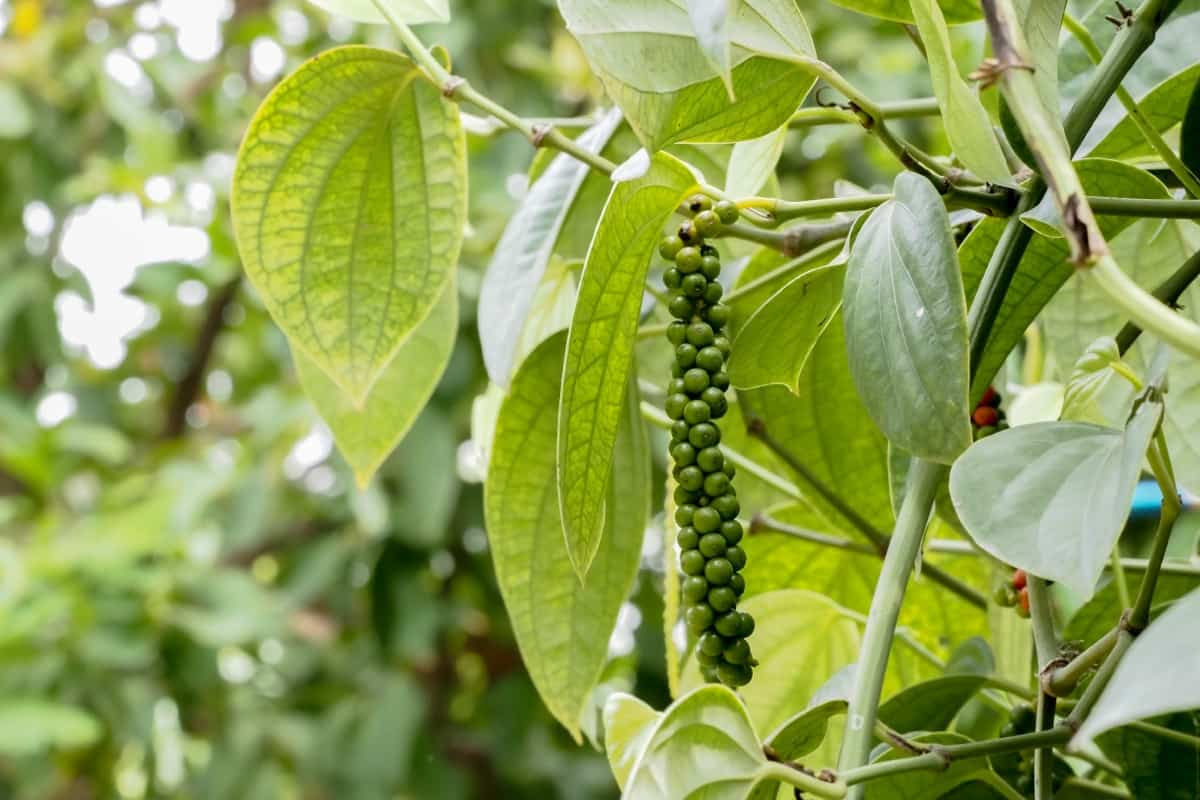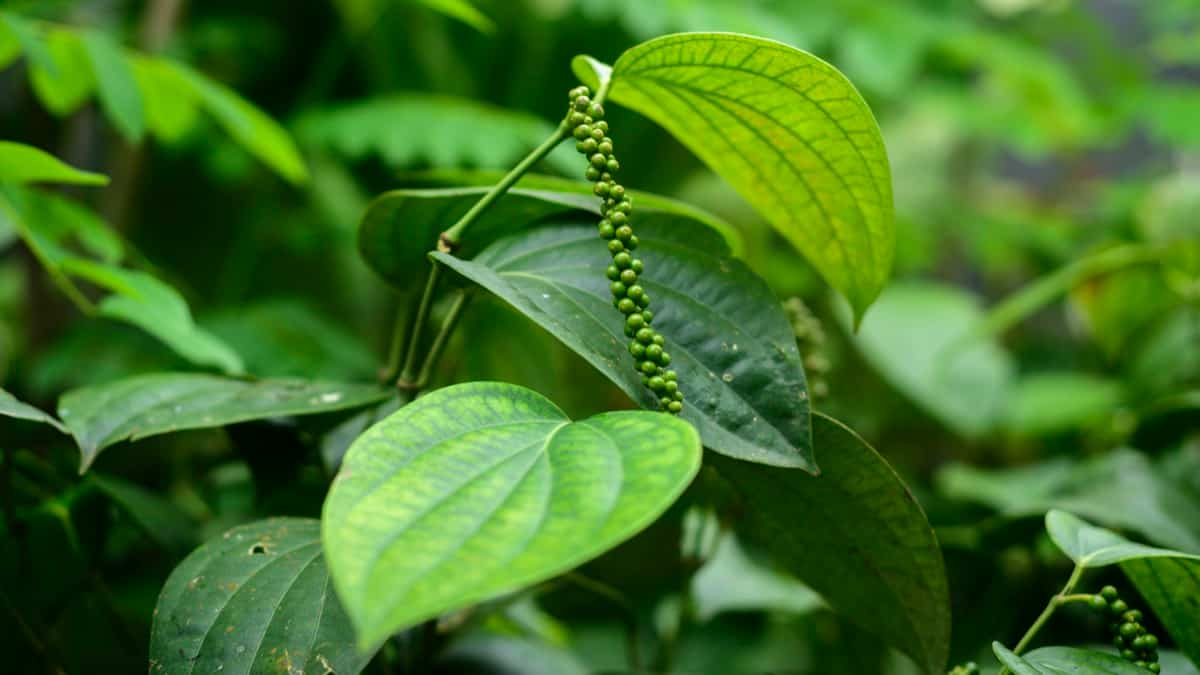Black pepper is a versatile and intriguing spice that originated in southern India. This woody vine is easy to grow with spiky white flowers and green fruits. Drying and cooking unripe peppercorns causes them to turn black and wrinkled. Despite its creeping nature, this perennial vine produces vibrant green leaves and drupes of green peppercorns. The plant is edible as well as ornamental. This is an excellent plant for a kitchen windowsill or small container. Fields and greenhouses can also be used to grow the long woody tendrils. Throughout this article, we will explore how this impressive spice is grown and harvested to demystify it for you.

How to Grow Black Pepper in a Greenhouse
Sunlight and Temperature Requirements for Growing in Greenhouse
You should always plant pepper plants in an area that remains humid and receives plenty of bright but indirect sunlight. Use a shade cloth that filters at least 50% of the sunlight if you are planting in a sunny area. If you live in a cool climate, give your plants full sun. Maintaining a constant temperature of 24-30°C for the plant to grow well. Pepper plants can tolerate temperatures ranging from 10 to 40°C, however.
Soil Requirements for Growing in Greenhouse
It is best to grow black pepper plants in fertile and medium clayey soil that retains a slight amount of moisture. It is always essential to have good drainage when growing black pepper in a pot or on the ground. Waterlogged soil can damage plants. pH levels in soil can range from 5.5 to 7; lime can be added if the soil is too acidic, and sulfur can be added if it is too alkaline.
Sowing Blackpepper Seeds and Transplanting Seedlings
- Seeds should be soaked for a day or two before planting to promote germination.
- After soaking the seeds for a few hours, place them in the containers and cover them lightly with soilless media.
- Plastic wrap should be used to cover the containers. Despite not requiring light for germination, pepper seeds need warm soil between 18 and 35°C to break dormancy.
- Ensure the soil temperature is raised to this level by placing heat mats under the containers.
- When the seedlings begin to emerge, remove the plastic from the containers and place them in a bright area of the greenhouse.
- Fertilize the seedlings once or twice a week once the roots have sprouted true leaves with a half-strength solution of water-soluble fertilizer.
- It is also good to thin seedlings in 4-inch pots to one plant per pot or transplant seedlings into larger containers.
Growing Black Pepper Plants from Cutting
- Consider planting black pepper cuttings if you know someone with mature black pepper plants.
- A runner should be removed from the parent plant. Ensure that the cutting has two to three leaves. It is never a good idea to cut into the primary vine.
- You can help the runner establish its roots by placing them in the soil. The runners of mature black pepper plants can also be cloned by burying them in the ground.
- Runner plants can be transplanted to a separate area in your greenhouse once they have developed their roots. A runner plant is one of the easiest and most economical ways to propagate black pepper plants.
- Start your cuttings in a greenhouse or raised planting area to increase their survival chances.
- Allow them to thrive in a protected environment before transferring them permanently.
Watering Black Pepper Plants Growing in Greenhouse
The soil where black pepper plants should be planted should have good drainage. Make sure your black pepper plants have plenty of seepage holes at the bottom if you plant them in pots. If you plant it directly in the ground, ensure the soil is not too wet or too clayey. The roots of the pepper plant could be damaged or even killed by these conditions. You should water your black pepper plants at least twice a week.
In case you missed it: Frequently Asked Questions About Black Pepper Farming

Pepper plants require approximately 2,000 millimeters of water per year, according to the National Development Agency (NDA) of South Africa. In years where rainfall does not equal 2,000 millimeters, man-made irrigation serves as a suitable substitute. Perennials with delicate lower leaves should be watered with drip sprinklers rather than directly sprayed.
Fertilizing Black Pepper Plants Growing in Greenhouse
A balanced fertilizer is recommended for black pepper, ideally with low to moderate fertilizing levels. Fertilizing the pepper plant can be done in two ways. When watering, the first option is to use a soluble or liquid fertilizer every two weeks. In addition, you can top-dress your plants once a month with granular organic fertilizer. In top dressing, fertilizer is sprayed on the soil and released every time it is watered.
For nutrient-rich soil, apply 10 kilograms of well-rotted manure or compost per year to mature plants. Plants in pots should be side-dressed with compost. At the beginning of the growing season, fertilize it with a balanced 10-10-10 or 20-20-20 slow-release fertilizer according to the instructions on the package. Epsom salt can also be beneficial when applied.
Mulching Black Pepper Plants Growing in Greenhouse
Mulching black pepper plants helps prevent weeds and pests from growing. Black plastic can be used to shield the soil during cool periods. By covering the soil with black plastic, weeds can be prevented without being insulated. Mulching materials such as straw, newspaper, and other compostable materials can also deter weeds and trap moisture. During a growing season, natural mulches break down. If the mulch begins to decompose or loses its effectiveness, replace it.
Pruning Black Pepper Plants Growing in Greenhouse
Pruning pepper plants regularly will improve the productivity of fruit-bearing runners. You should limit the number of runners on your vine. Additionally, you should take care to reduce secondary runners. There are three different sections on black pepper plants. Firstly, there is the main vine that climbs upward. As the vine grows, some runners will spread across the soil. Lastly, some branches or runners bear fruit.
Harvesting Black Peppers Grown in Greenhouse
Black pepper plants produce edible harvests after three to four years. Vine plants produce small, spiky white flowers when they reach fruiting age. These flowers take nearly eight months to develop into peppercorn clusters or drupes. A cluster of drupes resembles a cluster of low-hanging berries. When the black pepper plants are getting ready to go dormant, pay close attention to them. You should take action as soon as you see the first signs of ripening. Peppercorns should be removed from vines when a few fruits turn red.
In case you missed it: Black Gram Production Guide: A Step-By-Step Cultivation Practices

Conclusion
Black pepper plants are perennials in their native habitat since they prefer warmer temperatures year-round. It can also be grown annually in other parts of the world. The black pepper you grow in your greenhouse is worth the space if you want to grow your spices.
- Feed Your Flock for Less: Top 10 Tips to Save on Chicken Feed
- Ultimate Guide to Ossabaw Island Hog: Breeding, Raising, Diet, and Care
- Hatching Answers: The Top 10 Reasons Your Chickens Aren’t Laying Eggs
- Eggs and Economics: Breaking Down the Cost of Raising Backyard Chickens
- Defend Your Greens: Proven Methods to Keep Iguanas Out of Your Garden
- Ultimate Guide to Cinnamon Queen Chicken: A Comprehensive Guide for Beginners
- Ultimate Guide to California Tan Chicken: Breeding, Raising, Diet, Egg-Production and Care
- Ultimate Guide to Marsh Daisy Chicken: Breeding, Raising, Diet, and Care
- 10 Types of Chicken Farming Businesses You Can Start for Profits